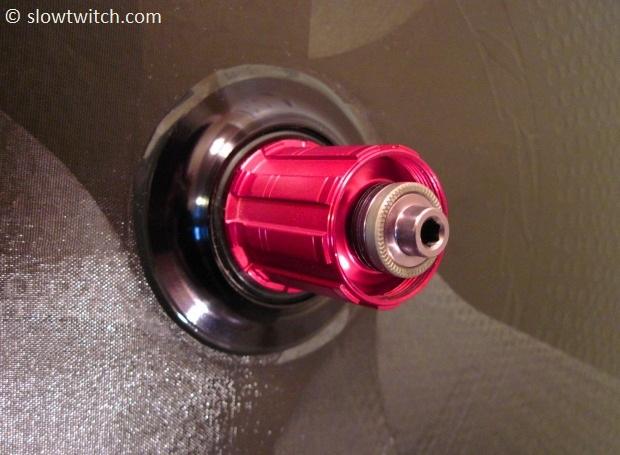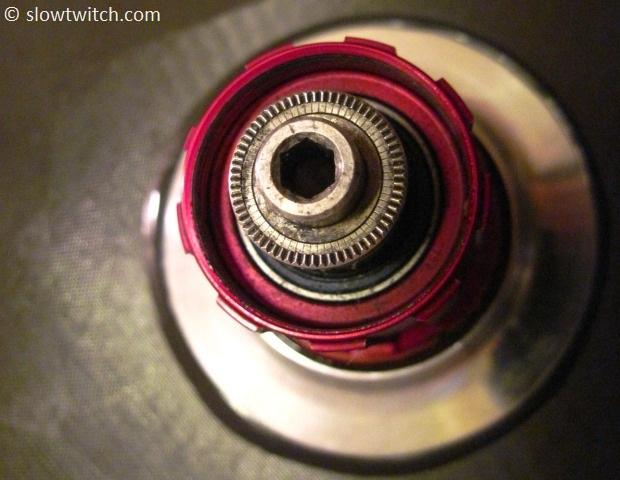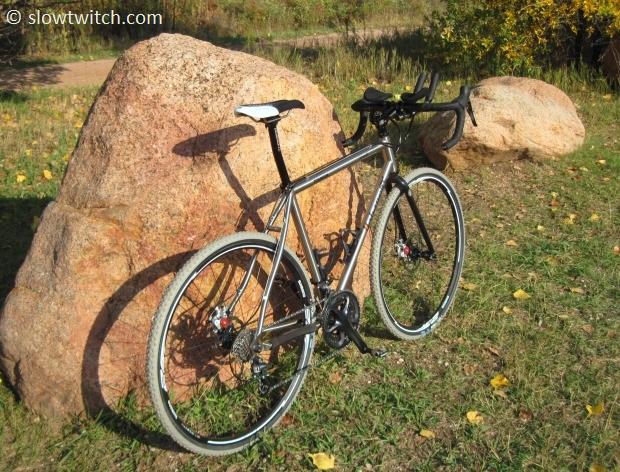Dumonde Tech Review
As much as possible, we like to review products that our editors actually buy and use. That is certainly the case for this editor and Dumonde Tech. I have a few categories of products that I really ‘geek out’ with, and chain lube is one of them (others include brake pad compounds, tires, and grease). Back in my bike shop days, my shop exclusively used Dumonde original BCL (Bicycle Chain Lube). It was dark green, smelled sweet, and did the job.
Over the years I experimented with a ton of other lubes – sprays, waxes, synthetics, and even good ol’ petroleum motor oil. I kept finding myself coming back to Dumonde. I’m never against finding new and better products, but for now this is my personal favorite do-it-all chain lube. The interesting part (to me) is that Dumonde didn’t even start in bicycles, but Kart racing. They now make a host of products for motorcycles, ATVs, snowmobiles, and other automotive applications.
We’ll cover the full line of Dumonde products in detail. For this review, I worked with the nice people at HGNR, Inc, Dumonde’s exclusive distributor.
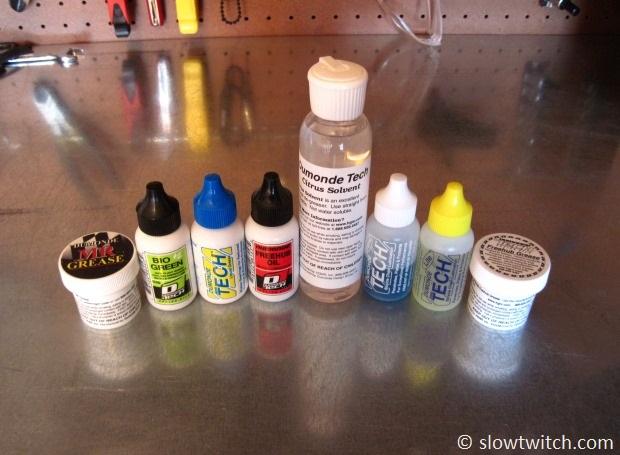
According to Stuart Hutchins, owner of HGNR, Dumonde Tech is a very unique beast in the world of bicycle lubes. It originally started as a motorcycle chain lube, and he worked with Dumond founder, Rod Falkner, to modify the mix for bicycles.
The tough part of writing about lubricants is that nobody wants to tell you their secret sauce. It’s like asking Colonel Sanders for a list of the 11 secret herbs and spices, or telling Coke that giving up their recipe is a good idea. Information is limited. With lubricants, however, the most important thing is that they work. I can’t tell you the half-life of various chain lubes in the environment or how they perform in a laboratory setting, but I can sure as heck tell you if a chain is noisy, nasty, or wears out quickly. I have more miles on Dumond than anything else, and can count no fewer than 14 other lubes I’ve tried off the top of my head.
Dumonde chain lubes
At the heart of the Dumonde product line is their original Bicycle Chain Lube, or BCL.

The key difference between this and other lubes, according to Hutchins, is that it is polymer-based. There are many different things on which you can base a bike lubricant – petroleum, synthetic oil, wax, silicone, Teflon, and vegetable oil, to name a few. The problem with the word ‘polymer’ is that it is a very broad category that includes everything from plastics to rubbers to wool. If I had to venture a guess, there are probably polymers in other chain lubes, but Hutchins says that theirs is the only one he’s aware of that is polymer-based.
They tell us that the key technology in Dumonde BCL is that it’s a liquid plastic that turns in to a solid plastic as you ride and your chain’s metal parts work against each other to create pressure and small amounts of heat. They say that this polymer is attracted to heat and will migrate aggressively towards it, unlike many oils that will move away from heat.
According to Hutchins,
“On its own, the liquid has very good lubricating properties. When it becomes solid, it falls in to the family of self-lubricating plastics. I can tell you that it is significantly more slippery than Teflon, but I can’t tell you exactly how much more slippery because that narrows the window for someone who wanted to find out what chemical we use.”
Interestingly enough, you cannot really see the plastic coating. In theory, it sounds a lot like a waxed-based lubricant, but the execution looks more like a very clean oil.
Dumonde makes two versions of this plastic lube – Original and Lite. The two have the same basic formula, and only differ in concentration. Lite is suggested for road bikes and good weather conditions, while the Original is suggested for mountain bikes and poor weather conditions.
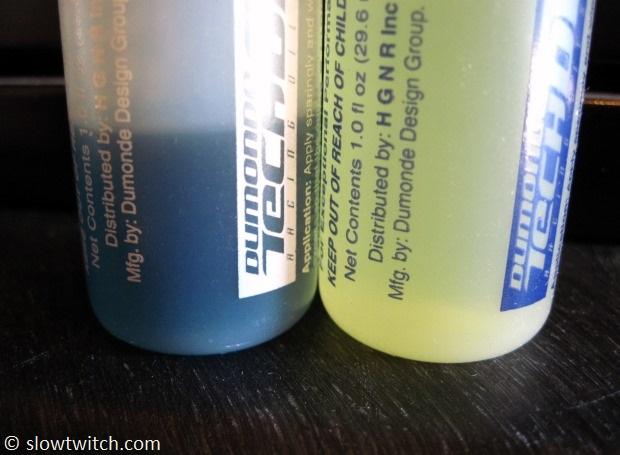
Pictured above: Original (left), Lite (right).
Dumonde also makes a relatively new environmentally-friendly lube called G-10 Bio Green. It’s their answer to the emerging segment of ‘green’ lubricants. According to Dumonde, it is 100% plant based and 100% bio-degradable.
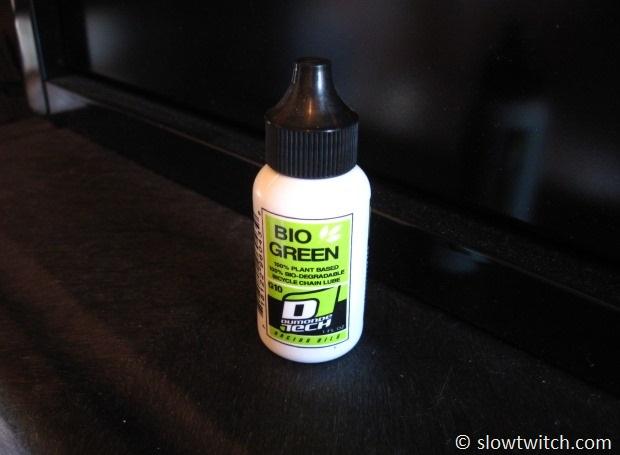
I had never used Bio Green until this summer, but have tried other ‘bio type’ lubes in the past. They have never seemed to work as well as their more-toxic counterparts, which is often the case with lubricants and cleaners.
Indeed, Hutchins agreed that their normal lube is fairly ‘green’ because you only need a small amount and don’t have to reapply it very often. My take is that G-10 exists to satisfy a market niche that some bike shops and consumers are very passionate about, and that’s a-okay with me.
From a performance standpoint, I found that the Bio Green worked very well for a ‘green’ lube. It’s the longest-lasting and cleanest ‘green’ lubricant I’ve ever used, but I still prefer the standard Dumonde BCL. If a super-green lube is what you must have, I can confidently recommend G-10. Just know that – like other vegetable-based lubricants – you will use more of it and clean your chain more often compared to conventional Dumonde lube.
Application Procedure
Every lube seems to have its own special method for application, chain cleaning, and reapplication, so I’ll cover the Dumonde method here.
Hutchins said that the only time you ever need to fully degrease your drivetrain is before the first application of Dumonde. As a piece of personal advice, I can tell you that you should completely degrease the drivetrain before changing from any brand of lube to a different brand of lube. This includes the factory grease on your chain – it should be stripped off before the first application of aftermarket lube. I’ve mixed different types in the past, and it almost always ends up being a messy (failed) science experiment.
To apply Dumonde BCL, use one small drop per link. You do not need very much. In fact, Hutchins told me that the biggest mistake he sees with their lubricant is people using too much and wasting it.
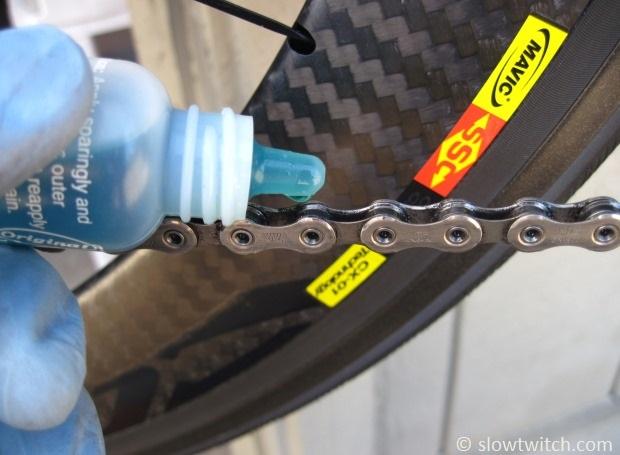
Hutchins tells us to use the smallest amount possible that will hit the whole roller and pin assembly. I always start and end on the connecting link of the chain so I know when I’ve hit every roller.
Once the lubricant is on, grab the chain with a clean rag in your left hand, and spin the cranks backwards with your right hand to spread the lube and remove any excess.
The final step is to don your tri race uniform, grab your tool belt, and drop the hammer. You might even think about taking your bike off of some sweet jumps.
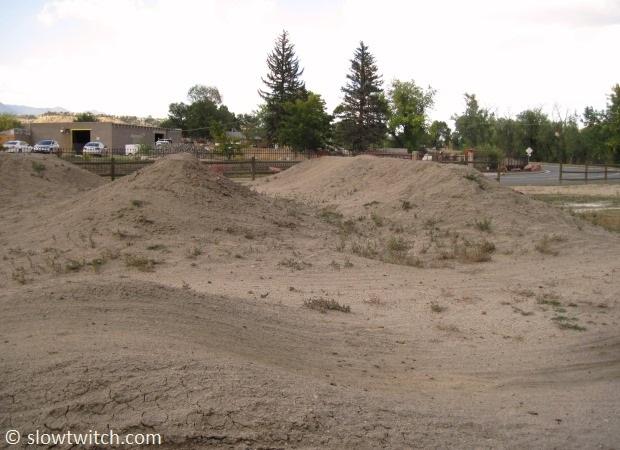
After riding, wipe the chain down again (it only takes five seconds). According to Dumonde, the lubricant will continue to migrate during riding to coat all of the mating surfaces of the chain. Some of this will end up on the outer plates, so you’re just wiping off the excess.
When should you reapply? This is where my personal preference diverges somewhat from the official recommendation. They say that you should reapply based on sound. In their experience, most people don’t use the lube to its fullest potential and over-apply. I prodded for a safe minimum mileage in dry/clean conditions, and Hutchins was comfortable with a figure of ‘at least 400 miles’.
Personally, I dislike when my bikes make any noise, and I’d hate to start hearing noise only 20 miles in to an 80 mile ride. As such, I probably apply lube slightly ‘too often’, but I still get a lot of mileage. I am just very sparing in my applications to keep from using a lot.

When it is time for more lube, what should you do? Degrease the chain? Wash the bike? Neither. Just drip some more on the chain and wipe it off well (if you’re super P-R-O, you’ll also wipe off the rear derailleur pulleys and exposed surfaces of the chainrings). Hutchins says that subsequent applications will help to continue the plating process. If you degrease everything, you’re essentially starting over from square one.
The reason this actually works is that the lube stays very clean, provided you don’t apply way too much. Here is a shot of my chain with about 1,000 miles on it, including rides in the rain and muck:
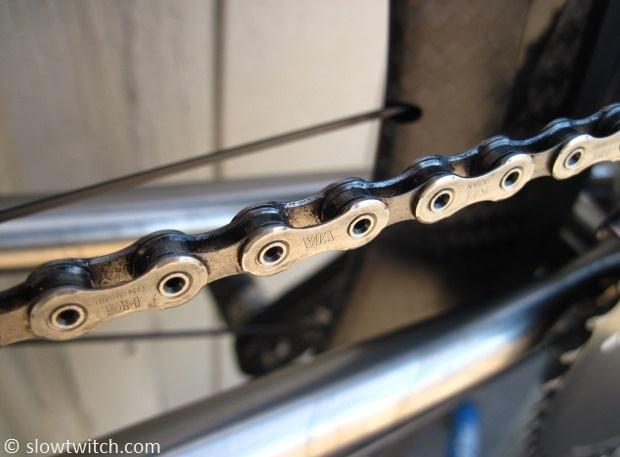
All I’ve done is apply more lube and wipe it off. They suggest that if you do wash the bike, you should only clean the chain with soap and water, so you don’t remove the polymer coating. Personally, I still fully degrease my chain every now and then, but I also do a lot more work on my bikes than the average person, and want a fresh test platform when evaluating things such as drivetrain components.
Bio Green application notes:
You can follow the same basic application and cleaning procedures with Bio Green. The only difference is that you must apply it more often. I also found myself more apt to do a full drivetrain degrease procedure, simply because the lube doesn’t stay quite as clean as the standard BCL.
Chain Removal?
Should you ever remove your chain to clean or lubricate it? Some people like to do this. For using a real heated paraffin wax lube, you are required to remove the chain. For Dumonde (and almost every other lube), chain removal is unnecessary. The only time I remove my chain is when I replace it or travel with my S&S coupled bike.
Lubricant Test
This was not a planned part of our review, but ended up being very worthwhile. I’ve written about my Habanero titanium ‘Uber Training Bike’ several times in the past. It’s a cyclocross-gravel-triathlon-do-it-all bike. I use it as a test platform for weird and goofy parts, and it’s currently the subject of some drivetrain tomfoolery.
Currently, the bike has Shimano Ultegra 6700 shifters, a SRAM Rival crankset, Rotor 36/50 Q-rings, a Force front derailleur, Ultegra 6700 chain, a Problem Solvers clamp adapter, and Rotor 6mm flat shim:
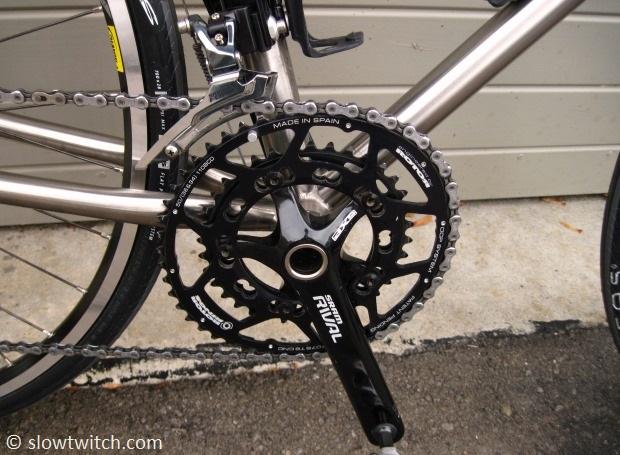
Given the mish-mash of parts, I had some trouble dialing in the front shifting. With a Shimano 105-level chain and older Ultegra 6600 front derailleur, I was getting unpredictable shifting and chain drops. With the Force derailleur and 6700 chain upgrade, things were working better. The shifter and derailleur’s trim settings aren’t perfectly compatible, but it’s rideable. I’d still get chain drops on the outside very occasionally, but I had to shift under load or otherwise cause it to happen on purpose.
This summer, I switched the bike from standard Dumonde lube to G-10 Bio Green (I degreased the chain, cleaned the rings, and cleaned the cassette, too). Nothing else changed – no derailleur adjustments, no parts – nothing. The chain was still in good condition and not ready for replacement.
On the next two rides, my incidence of chain drops tripled or quadrupled. One ride was in the rain, and I was dropping chains left and right.
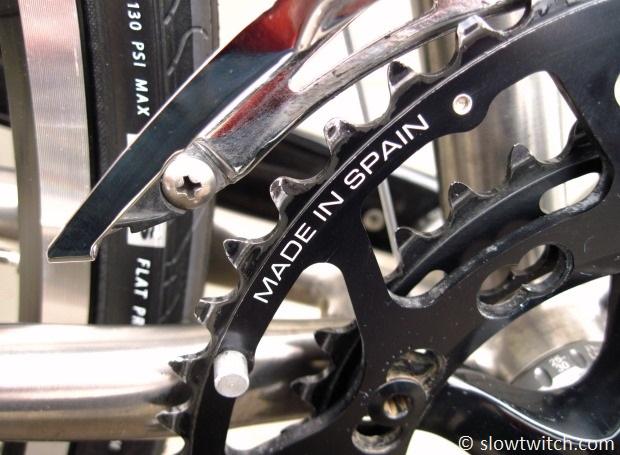
I was stumped. What happened? Surely it wasn’t ONLY the chain lube? Out of curiosity, I re-stripped the chain, cleaned the rings and cassette again, and applied original Dumonde BCL.
I went out to ride the following day, and – boom – no chain drops. My single variable (the chain lube) had a huge effect on shift performance. It appears that my very odd setup was just on the brink of functioning properly (or not), and that was the straw that broke the camel’s back.
Does that mean that G-10 Bio Green is worthless? In my opinion, no. With a more ‘pure’ drivetrain from a single manufacturer (e.g. Ultegra crankset, chainrings, chain, shifter, and front derailleur), your chance of a chain drop goes down significantly. However, when using odd or off-brand setups, it appears that chain lube has a huge influence. There is definitely more to learn here, and I have some other tests planned for my crazy-bike. For now, it’s a fascinating data point.
Other Dumonde Products
We’ll run through some other Dumonde products other than chain lubricants.
Liquid Grease
Dumonde sells a very interesting product called ‘Liquid Grease’.

It’s hard to tell in the above photo, but Liquid Grease is very thick as far as lubricants go. This is intended for applications where a grease is too thick, but a traditional lube is too thin. A great application for this is a freehub drive mechanism that has a spring too weak for grease, but you still want a long-lasting lubricant. I also like products like this for hubs and parts that are ‘non serviceable’ by design, but you can service via dripping/forcing lubricant into them to extend their useful life (e.g. Shimano freehubs, older Zipp 217-model freehubs). Also: lubricating bushing-style rear derailleur pulleys.
The big secret of Liquid Grease is it’s the same formula as the Original and Lite chain lubes, only with a higher concentration. If you’re going to ride in very extreme conditions or won’t have the ability to re-lubricate your chain for a long time, you can use it as a chain lube.
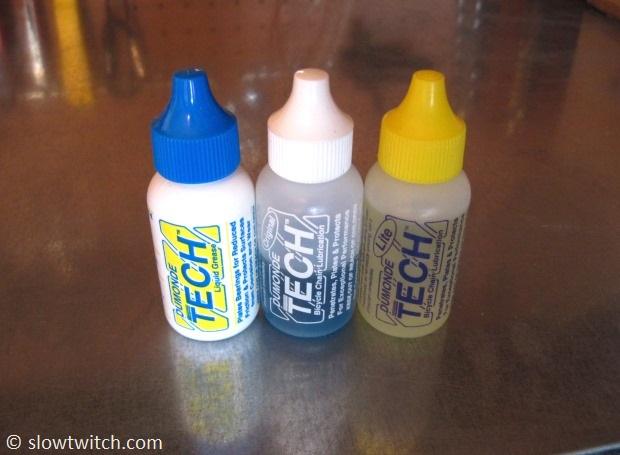
Freehub Oil
Dumonde Freehub Oil is intended for just that – freehubs. We used it in our Zipp 182 Hub How-To article, linked at the bottom of this page. That hub design uses a very light weight spring mechanism that cannot handle grease; you must use a light oil. Years ago, I would actually use the standard dark green chain lube for that hub, and it worked very well. I wouldn’t say that the Freehub Oil is ‘bad’ per se, it just seems somewhat redundant to me, given how well the Original and Lite lube works for this application. I would use Freehub Oil for very cold weather applications, as it stays liquid to -40 degrees Fahrenheit.
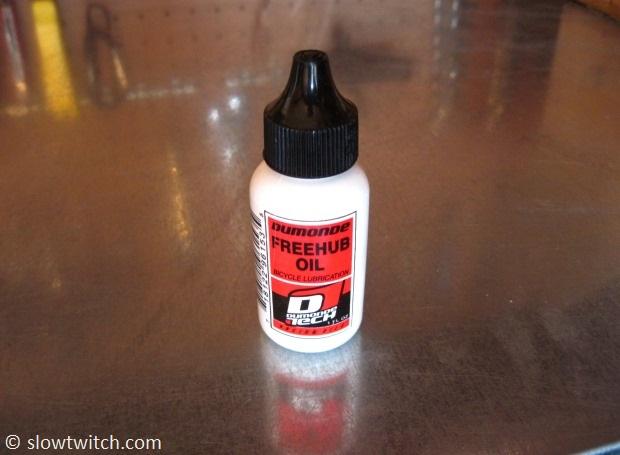
MR and Freehub Grease
Dumond has two greases – Freehub and MR (Micro Resistance):
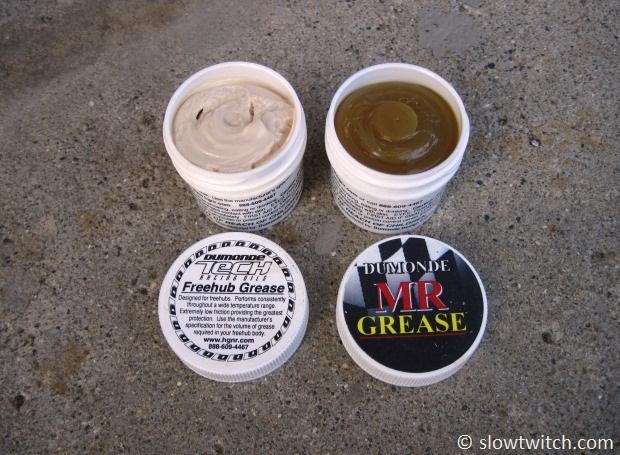
MR is intended for ball bearings, bolts, or anything application that you would normally use grease. Dumonde tells us that it actually uses a polymer formula that is very similar to the chain lubes and liquid grease, so you can mix the products to any desired consistency. It is quite thick on its own, so I use it for heavy duty applications such as Shimano mountain bike hubs. I don’t have enough long-term use with it to have a full ‘verdict’, but as of now, it seems to work well.
The Freehub Grease is intended for drive mechanisms that are strong enough to handle grease; it is even DT-Swiss approved. It looks like a thick paste, but is actually quite pliable and easy to work with. It would be too sticky for the older Zipp 182 hub, but perfect for the newer 188.
Citrus Cleaner
Dumonde makes a very heavy duty cleaner, called Citrus Solvent:

I reserve this stuff only for heavy duty jobs (e.g. a VERY nasty bearing, chain, or cassette). It seems to cut right through just about any measure of muck. My only beef with it is that you cannot rinse it away entirely with water; you must use soapy water. This is fine if I’m doing a full-blown bike wash or very involved service, but those are fairly rare for me. My go-to solvents for ‘normal’ work are WD-40 and 91% Isopropyl alcohol. If those fail to do what I need, I turn to Citrus Solvent and just deal with the slightly more involved clean-up procedure.
Pricing
The most common criticism I hear about Dumonde Tech is the price. At $17.25 for a four ounce bottle of Original BCL, it is twice the price (or more) of some common competitors. The same volume of ProLink ProGold or Finish Line Dry Teflon lube will cost you about eight bucks. I’ve found that I use a much lower volume of Dumonde, and reapply it less often, so the price – to me – is a non-issue. Even if it worked out to be a little bit more expensive, I personally think the price is fair given the great performance. Here is a full 2013 pricing sheet:

What do you think? Do you have a favorite chain lube? Have you ever tried Dumonde? Chain lubricant is most definitely a polarizing topic with many different opinions and methods.



